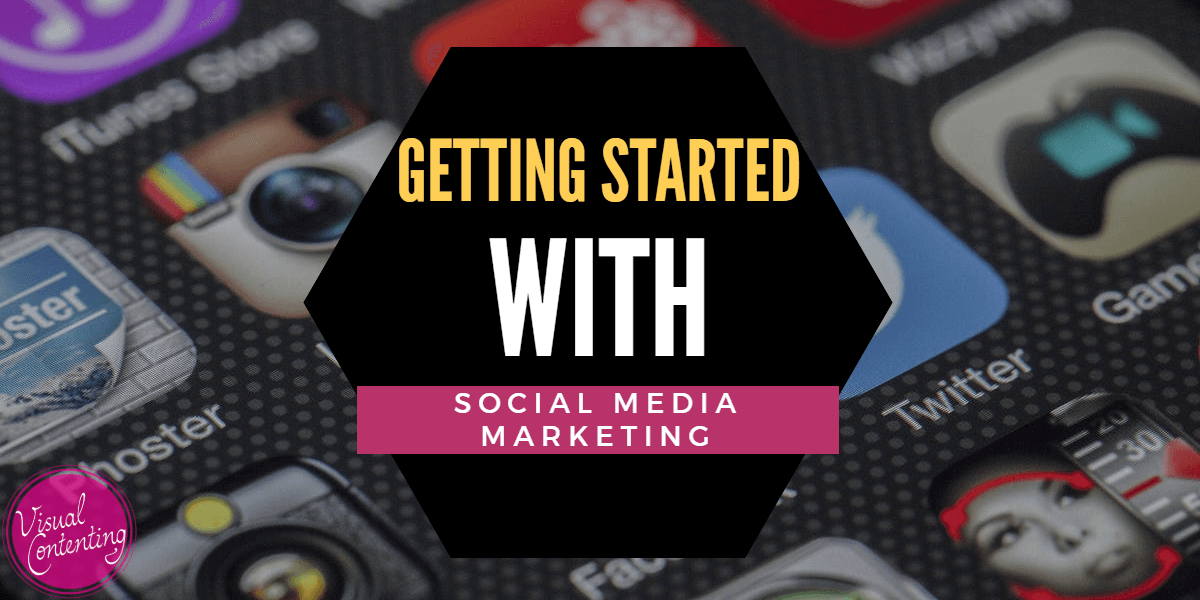In this age of easily shared content, data and ideas, it often feels like an impossibility to concoct a concept that has never been thought of or done before.
As such, the most effective markets grew a tendency to become overcrowded with repeats, variations and improvements of already existing ideas.
But that doesn’t mean you should get up and leave a crowded niche, as there remain ways to get up to stand out.
Whether you’re a new player looking to enter a crowded market, or a pioneer that’s beginning to get overwhelmed with all the new, yet familiar faces, you can always find ways to keep yourself from drowning in a crowded niche.
Create Specialized Customer Persona
To get you started on the path to standing out from the crowd, you need to create customer personas to help you understand your customers and prospective buyers better.
As noted by marketing software product developer, HubSpot, creating specialized customer personas provide you with a guide that allows you to customize your strategies – in content creation, messaging, product development, etc. – to the different needs, behaviors and concerns of different customer groups.
Having a specified customer persona also gives you ideas on when, where, and how to promote your product and content, which results to an increase of ROI. You can segment your email list based on customer types, interests, location and level of engagement, for example, for a more targeted approach.
To give you a clearer idea, you might know full well that your target market is composed of media practitioners, but without creating customer personas, you may not be able to understand what their specific needs and interests are.
You might think you are in a crowded niche but a customer persona helps you differentiate yourself from others and create ultra targeted strategies.
How Do You Come up with Customer Personas?
The best way to get data for your customer personas is by conducting market research (what an ideal buyer’s backgrounds is, what turns them off, etc.), and by combining your findings with data from your actual customer base (from direct comments, surveys, interviews, etc.)
Example of an effective customer persona
Here is a simple example of a customer persona of an agency providing Digital Marketing services:
Joshua is a 37-year old from UK, who earns around £45,000 as an owner and founder of a small online company, composed of 5 people, offering web developer services. Throughout their first year, all their clients were only referred by a friend or another client. Although this means that their services are good enough to be continuously promoted by their clients to other potential clients, this frustrates him because he knows that growth will be limited.
He wants to expand the company and gain more clients outside the referral sphere but has only known about marketing through the things he reads online, through linkedin groups, google search, and facebook. But all his stock knowledge remains stocked as he never gets to implement anything because of his day to day job and his responsibilities as a father of two. Despite that, he isn’t sure if he can afford outsourcing for digital marketing or if it will have any positive results.
Competitive Analysis
Although it may seem like a tedious and daunting task to comprehensively analyze your competition in an overcrowded market, a competitive analysis is a crucial part of making you understand what makes your product unique relative to your competitors, and what attributes you need to play up in order to get a leg up on the competition.
An excellent way to get you started is by asking yourself what would your customers buy if they didn’t avail of your product/service?
Using tools like SimilarWeb and SEMRush allows you to identify your competitors easily and start evaluating your competition by asking the following questions:
- What are their strengths and weaknesses?
- What is each competitor’s market share?
- How do they market their products?
- What are their past/current strategies?
- What potential opportunities do they make available for you?
Once you answer the above questions (among other pertinent questions you may see fit), Shopify suggests to continue evaluating your competition by making a list and going through their websites one by one to know the main features and characteristics of each of their product/service and have a feel of who they really are.
This will enable you to get an idea of where your product fits in the overall market.
Identify Your Unique Selling Proposition
A couple of common mistakes made by businesses that find themselves in a crowded niche is trying to compete directly with competitors in a crowded space, and trying to be the best at everything all at once. A great way to avoid making these mistakes is by identifying your unique selling proposition.
What Is a Unique Selling Proposition?
Essentially, a unique selling proposition is what your business stands for. As noted by customer analytics platform Kissmetrics, it is also what sets your business apart from the competition precisely because it is what your business makes a stand for.
Businesses with clearly identified unique selling propositions avoid attempting to be known for everything, instead focusing on that specific thing that they want to stand for, which eventually becomes exactly what they are known for.
Take Starbucks for example, in a world filled with coffee shops of all shapes and sizes, their brand has managed to make the transition from a small outlet in Washington to a global powerhouse in the coffee industry by identifying what it is they stand for.
Starbucks is known for premium coffee beverages. That’s it. They’re not known for premium coffee beverages, and delicious all-day breakfast, at affordable prices; not also for the best pastries and sandwiches, nor do they aspire to be. They are known for premium coffee beverages, and while they offer a slew of other excellent products that go along with their drinks, good coffee is their calling card.
TOMS shoes is another good example of a company that identified a unique selling proposition to make them stand out of the crowded footwear industry. Apart from manufacturing shoes, TOMS claims to be in business to help improve lives. And as part of that promise, they give away one pair of shoes to a needy child for every pair that they sell.
While they’re adding to the cost of goods sold, TOMS’ choice to commit to its passion of improving lives over solely focusing on profit has led to an investment in the creation of “emotional profit” – something can be much more valuable in the long run. As of this writing, TOMS claims to have given away 70 million pairs of new shoes.
Prioritize Quality
Apart from extraordinary experiences, providing quality products/services that result in happy customers is another way to keep them coming back for more. And in this age of social media, it also would most likely lead to having those same happy customers send more business your way.
While you might argue that every business has been providing good quality in mind when conducting their state of affairs, it is often not the priority – taking a back seat to other factors like quantity, most of the time.
Similar to how identifying unique selling propositions help make you stand out from the crowd, one company that prioritizes quality over quantity, and in the process of focusing on more quality-driven metrics is Upworthy.
The social media sharing site had a leg up on the competition by creating a new way to measure success. Instead of focusing on unique visitors and page views, it measured success based on a user engagement metric it calls “attention minutes.”
By trying to find out how well it’s doing in keeping its audience’s attention, it is able to gauge the quality of the content it offers. It banks on the premise that while its page views may not be at par with other social media sites, by having more quality content, users will keep sharing them – ultimately feeding its bottom line. Upworthy did such a good job of focusing on quality that in 2013, it was called the “fastest growing media company in history.”
Be Open to Developments
It’s easy to stick with what works, but to truly stand out, you need to keep pace with the developments – particularly with those not directly linked to your core business.
Take Facebook for example – while they continued to be the leading social media platform, Facebook introduced Facebook Messenger to encourage people to stay on their platform, instead of jumping over to Whatsapp, Viber or Line to communicate with their friends.
And after including all the functions that’s become standard in messaging apps (video calls, and sending all types of multimedia), they eventually rolled out their payments function that allows you to send and receive money from right within the app.
And the developments you keep pace with doesn’t even have to be of the groundbreaking ilk. It could be as simple as implementing new payment methods, or updating security features on your e-commerce site – by doing so, you already give yourself a chance of standing out from industry players that aren’t keeping up with current standards.
Create Development by Disrupting the Norm
Again, you don’t have to reinvent the wheel. As pointed out by global startup community platform Startup Grind, Trip.com made themselves stand out from the plethora of travel websites and apps simply by providing new ways to search.
While other platforms like Expedia, Priceline and Kayak narrow down flight and hotel options by price, Trip.com, categorized its offerings differently—what hotels are best for families, romantic partners, and even eco-conscious travelers.
As noted by Startup Grind, the concept of disruption is all about seeking opportunities – often by breaking into a field at the bottom, thus enabling you to serve as large group that’s financially excluded from higher end options.
Be Human
This is perhaps the most important trait in being able to stand out from a crowded niche. It is also probably one of the most overlooked. Whether you’re a bootstrapped startup or a multi-million dollar enterprise, it’s easy to get blinded by too much focus on revenue, expenses and the bottom line that you forget that customers relate better to human companies.
Now, more than ever, success is determined by your ability to create experiences that people can relate to, or in the best cases, love.
Treat Customers Like Friends and Family
Because of the digital nature of the world and the role social media plays in the way we communicate, people have grown to expect brands to connect with them like, well, people. They tweet at companies, send DMs to brands and expect a response like they would if they sent a message to a friend.
Customer support is one of the easiest ways to make yourself “human” to your customers. And it won’t take long for your company to see quantifiable benefits.
Tell Your Story
If there’s something people tend gravitate toward apart from good products/services and pleasant experiences, it’s a good company story. That’s why it’s important to connect on a human level with your customers by creating a narrative that they can relate to.
As noted by Startup Grind, people are not only interested in what your product does for them, they also want to know how your product reflects on them – what others will think of their affiliation and loyalty to your brand; a good story does that for you.
Model Human Companies
As noted by Inc., Domino’s and Delta Airlines are two excellent examples of companies in extremely overcrowded marketplaces that have managed to stand out from the crowd.
Domino’s public admission that their pizzas weren’t that good, allowed them to run a campaign that showed how their employees go through the tedious effort of taking customer complaints, while getting enough feedback to be able to try and reinvent their product.
Its success came as a result of customers seeing the human element of a company making mistakes and doing the necessary steps to try and fix them. As pointed out by Inc., following the campaign’s running, Domino’s reported a fourth quarter profit that doubled the previous year’s.
Delta, for its part, was named one of Fortune’s Top 50 Most Admired Companies (and the most admired airline overall), mostly on the legs of little human touches that they sprinkled across their service. Humorous safety videos, and how their pilots personally thank every passenger that gets off the plane may appear like trivial touches, but these are the kind of experiences customers appreciate, and perhaps more importantly, remember.
Takeaway
As you can see, there is a unique challenge brought about by finding business in a crowded market. And like all challenges, there are plenty of solutions to overcome them.
From understanding your customers better by creating buyer personas and conducting a competitor analysis, to identifying your unique selling proposition and focusing on quality, to ensuring that your business is very much in tune with human elements – these are a variety of concrete steps you can take to stand up from the crowd.
There’s a reason markets become crowded – and it’s because there’s business to be made.
Understanding, and taking the time and effort to find the many opportunities that remain untouched should be a challenge you should revel in, for if you find your way through the cracks, you’ll find how much it pays in the end.
Related Posts
Jolina Landicho is a marketing specialist devoted in creating strategies and teaching professionals how to bridge the gaps between businesses to businesses, businesses to customers, and customers to customers.








